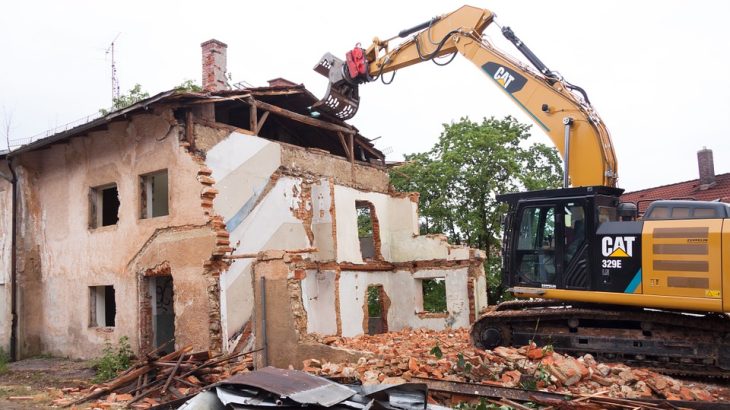The condition of a building must be meticulously monitored from all angles. Indeed, it must be in good condition to guarantee the safety of the occupants and to have a presentable appearance. Renovation work allows the correction of damage suffered by construction due to wear and tear or the time and elements tests. However, there are cases where this method is ineffective, forcing the need to raze the structure completely.
When Should a Building Be Demolished?
An old building can be spotted at a glance. Indeed, it often presents features revealing its age, such as cracks or paint degradation. One can also notice that its constituent elements are in a shabby state. Although renovation work may allow for refurbishing the aspects of a building, it is by no means sufficient to guarantee long-term stability. The energy capabilities and waterproofing also decline over time. As a result, comfort is no longer guaranteed, and there are potential dangers such as water leaks or thermal disturbances, or even worse, the collapse of the roof or walls.
What Are the Different Steps of a Demolition?
Administrative and Safety Procedures
Before starting any demolition work, it is necessary to consult the authorities. They will then issue a permit authorizing the work to proceed. Safety must also be considered because it is both a hectic and delicate operation.
Evaluation of the Premises
A diagnosis of the premises’ state is mandatory to avoid potential dangers and plan the operations to be carried out. Indeed, harmful elements can contaminate the workers working on the site or the people living near the building.
Demolition work
– Dismantling
By definition, leveling consists of lowering the level of a structure. Within the demolition framework, it consists of knocking down a wall from its top. This method makes it possible to demolish a structure without touching the foundation; if, of course, a reconstruction is planned. In terms of safety, it secures the surrounding perimeter from concrete falls or rubble rains.
– Undermining
Contrary to dismantling, undermining consists of demolishing a structure from its base. By destroying the foundations, the upper parts collapse instantly.
-Mechanical Demolition
This operation requires the use of machines such as mechanical shovels or bulldozers. The use of these machines limits both human intervention and the necessary working time. Indeed, it allows to work in a larger space and facilitates the breaking of hard materials like concrete or stones.
– Blasting
This process consists in demolishing a structure by blowing it up with dynamite. This technique is often used on large buildings to facilitate and accelerate the demolition process. However, it is strongly advised to take rigorous precautions before resorting to it since dynamite is very dangerous. The explosion’s shock or the debris that escapes can cause considerable damage.

Why Choose Demolition?
Demolition is the best option for several reasons. Although renovations can be done, the basic structure will eventually fail under the weight of wear and tear. A collapse could endanger the occupants and the surrounding buildings. In addition, a series of renovations will only temporarily mask the wear and tear without permanently strengthening the structure in question. This represents a waste of time and a poor long-term investment. From an aesthetic point of view, the state of disrepair reflects a rather unpleasant image of the premises. So, even if it means investing, the best thing to do would be to demolish the building and consider rebuilding it.



















